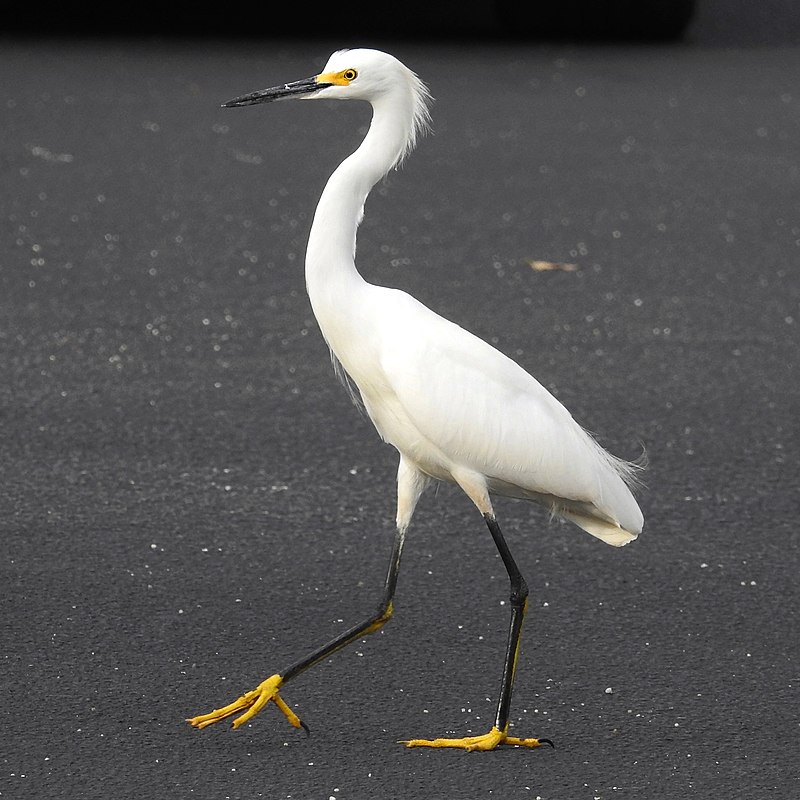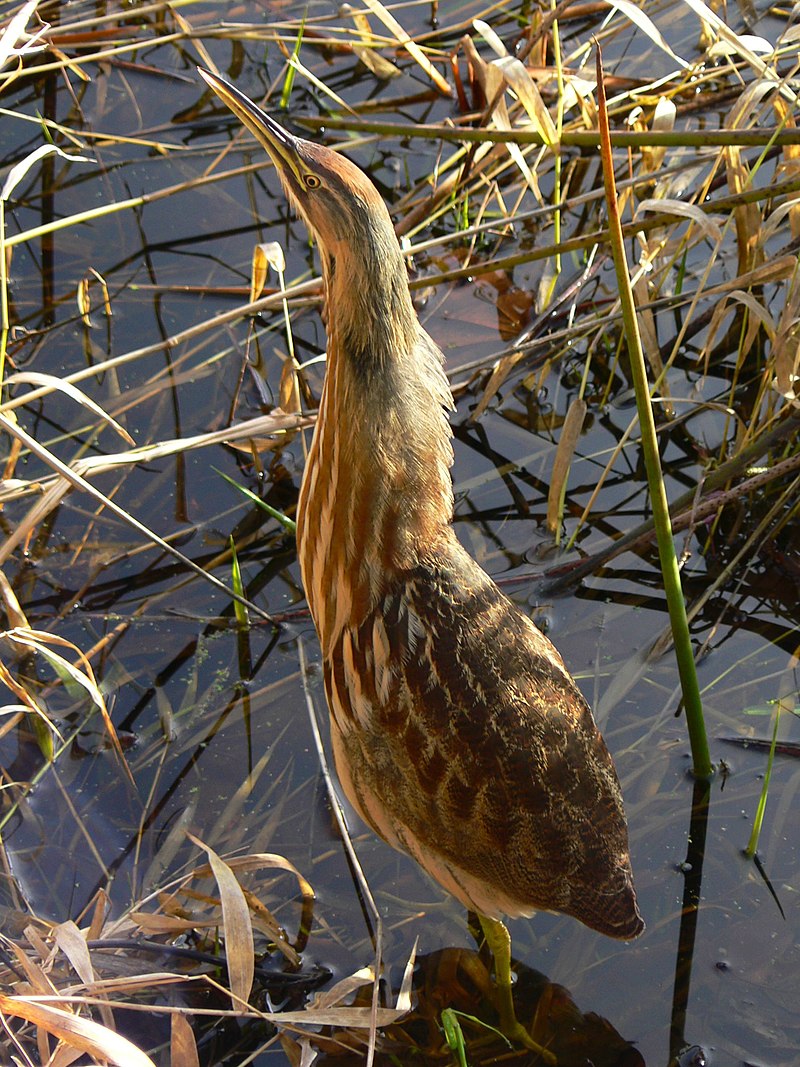Virginia Key, located in the southeastern region of Florida, is a renowned paradise for bird enthusiasts worldwide. This picturesque island is encompassed by 863 acres of pristine natural beauty, making it an ideal habitat for a diverse range of birds.
A popular bird-watching spot, Virginia Key is home to both resident and migratory bird species. Birding activities on the island range from casual birdwatching to organized bird walks, providing a unique opportunity for visitors to observe and appreciate the fascinating world of birds closely.
Virginia Key is undoubtedly a bird lover’s paradise whether you are a seasoned birdwatcher or a casual observer.
10 Birds You Should Know Virginia Key
Virginia Key, located in Miami, Florida, is home to various bird species due to its diverse habitats, including beaches, mangroves, and hardwood hammocks.
Here are ten bird species you might encounter on Virginia Key:
1. Red-Bellied Woodpecker
The Red-bellied woodpecker is a beautiful bird with an orange-red crown and nape. It breeds mainly in the eastern United States, from Florida to Canada.
This medium-sized woodpecker of the family Picidae has black wings, white stripes on its back, and tail feathers barred with black.
Its underside is mostly pale yellow or white, but it has red coloration around its neck.
Despite this subtle red hue, it should not be mistaken for the entirely red head and neck belonging to the Red-headed woodpecker of the same genus, Melanerpes carolinus.
The Red-bellied Woodpeckers’ diet consists primarily of insects such as ants, beetles, grasshoppers, nuts, fruits, berries, and tree sap, which they will feed upon at different times throughout their life cycle.
Scientific classification:
| Kingdom | Animalia |
| Phylum | Chordata |
| Class | Aves |
| Order | Piciformes |
| Family | Picidae |
| Genus | Melanerpes |
| Species | M. carolinus |
Also Featured In: Most Common United States Birds, Most Common Winter Birds
2. Osprey
The Osprey is a majestic bird of prey with an incredibly wide habitat range. It has distinctive brown upperparts, greyish head, and underparts, making it easily identifiable in the skies above many regions worldwide.
With a wingspan of up to 180cm (71in) and a body length reaching 60cm (24in), this large raptor specializes in hunting for fish, soaring high over rivers and coasts, and searching for its next meal.
Despite living near water sources, they can also be found inhabiting mountainsides or even woodlands, proving their incredible adaptability. It is an impressive species that truly deserves admiration.
Scientific classification:
| Kingdom | Animalia |
| Phylum | Chordata |
| Class | Aves |
| Order | Accipitriformes |
| Family | Pandionidae |
| Genus | Pandion |
| Species | P. haliaetus |
Also Featured In: Most Popular Bird Species in North America, Ukrainian Birds You Should Know
3. Yellow-Breasted Chat
The Yellow-breasted Chat is a large songbird found in North America and is the only member of the family Icteriidae.
It was once part of the New World Warbler family but has since been moved to its group due to taxonomic uncertainty.
This bird stands out as it was previously thought to be the largest species within Parulida.
Its plumage features shades of yellow, olive green, and brown; males have darker heads, while females are slightly paler overall.
The cat’s diet consists mostly of insects such as caterpillars and beetles, which they forage from low vegetation or glean off leaves on tree branches during summer when their populations peak.
They also feed heavily on fruits like elderberry, grapes, and wild cherries during migration periods throughout the spring/fall season, providing much-needed energy for long journeys southwards or northwards depending upon geography and location each year.
Scientific classification:
| Kingdom | Animalia |
| Phylum | Chordata |
| Class | Aves |
| Order | Passeriformes |
| Superfamily | Emberizoidea |
| Family | Icteriidae Baird, 1858 |
| Genus | Icteria Vieillot, 1808 |
| Species | I. virens |
Also Featured In: Dominican Republic birds, Birds Commonly Found in New York
4. Roseate Spoonbill
The Roseate Spoonbill is a beautiful and majestic bird in North and South America.
It belongs to the ibis family, Threskiornithidae, and its vibrant pink color comes from canthaxanthin pigment derived from their diet of crustaceans like shrimp.
Sadly, plume hunting almost drove this species close to extinction during the 18th and 19th centuries, but fortunately, it’s coming back due to conservation efforts made by dedicated wildlife organizations.
Its large spoon-like bill helps them filter out food sources such as small fish or frogs from shallow water areas while they wade through mudflats with their long legs looking for something tasty.
With its unique appearance, graceful wingspan, and impressive flight capabilities, the Roseate Spoonbill is an incredibly photogenic animal that will captivate the attention of any viewer lucky enough to witness it in all its glory.
Scientific classification:
| Kingdom | Animalia |
| Phylum | Chordata |
| Class | Aves |
| Order | Pelecaniformes |
| Family | Threskiornithidae |
| Genus | Platalea |
| Species | P. ajaja |
Also Featured In: Costa Rica Birds, Famous Paintings Birds
5. Indigo Bunting
The Indigo Bunting is a small bird in the cardinal family throughout North and South America.
It has an unmistakable bright blue plumage that stands out against its natural habitat of farmland, brush areas, and open woodland.
During the breeding season, it can be seen from southern Canada to northern Florida, while during winter months, it migrates south towards Central and Northern South America.
The Indigo Bunting prefers to migrate at night using the stars as navigation aids.
This species feeds on insects and seeds they find near the ground or catch mid-flight with their agile wingspan.
An iconic sight for many farmers across both continents, these birds are a welcome addition to any backyard oasis or wildflower meadow.
Scientific classification:
| Kingdom | Animalia |
| Phylum | Chordata |
| Class | Aves |
| Order | Passeriformes |
| Family | Cardinalidae |
| Genus | Passerina |
| Species | P. cyanea |
Also Featured In: Georgia Birds, Blue Birds You’ll Found around Us
6. Snowy Egret

The Snowy Egret is a small white heron native to North America. Its scientific name, Egretta thula, comes from Provençal French for the little egret and an incorrect reference to the Black-necked Swan by Chilean naturalist Juan Ignacio Molina in 1782.
This beautiful bird has black legs, yellow feet, and a long plume of feathers on its head that often appears as if it’s wearing a crown.
It feeds primarily on insects and aquatic life like fish or frogs, making it well adapted for wetland habitats such as marshes or swamps and coastal areas close to shorelines.
Their graceful movements make them truly delightful creatures to observe while exploring nature.
Scientific classification:
| Kingdom | Animalia |
| Phylum | Chordata |
| Class | Aves |
| Order | Pelecaniformes |
| Family | Ardeidae |
| Genus | Egretta |
| Species | E. thula |
Also Featured In: Trinidad and Tobago birds, Water Birds Live around Us
7. American Bittern

The American Bittern is a solitary, brown-wading bird from the heron family. It lives in North America and Central America, breeding in Canada and northern parts of the United States before migrating south to winter on the states surrounding the Gulf Coast and Florida’s Everglades.
It blends into its surroundings thanks to its muted coloring and has a unique call that helps keep it hidden – an “un-ducklike” booming sound that can travel long distances due to low-frequency vibrations.
The bittern spends most of their time alone. Still, during mating season, they become more social while gathering together at wetlands for courtship activities such as displaying with feathers erect or head bobbing.
Scientific classification:
| Kingdom | Animalia |
| Phylum | Chordata |
| Class | Aves |
| Order | Pelecaniformes |
| Family | Ardeidae |
| Genus | Botaurus |
| Species | B. lentiginosus |
Also Featured In: Herons Species, Birds That Live in Colorado
8. Marsh Wren
The Marsh Wren is a small bird native to North America, belonging to the Wren family. It has a long bill and can be distinguished from other species of marsh birds, such as the sedge wren, by its size.
The Marsh Wren was first described in 1810 by Alexander Wilson under the binomial name Certhia palustris and now belongs to the genus Cistothorus.
This songbird prefers wetland habitats like marshes, swamps, or wetlands with dense vegetation for sheltering and nesting activities.
They build nests on grasses near water bodies made of twigs attached at one end, forming an enclosed cup-like structure lined with feathers or fur, making it look like a woven basket.
Scientific classification:
| Kingdom | Animalia |
| Phylum | Chordata |
| Class | Aves |
| Order | Passeriformes |
| Family | Troglodytidae |
| Genus | Cistothorus |
| Species | C. palustris |
Also Featured In: Wrens Species, Most Common Songs Birds that Live around You
9. Orange-Crowned Warbler
The Orange-crowned Warbler is a small songbird from the New World warbler family. It was formally described in 1822 by Thomas Say, who gave it its scientific name Sylvia celatus – Latin for ‘cloaked’.
This species has an olive-green back and wings with yellowish underparts. The males have bright orange crowns during breeding season, which gives this bird its namesake.
They can be found mainly in North America but also migrate to Central America during winter.
Their diet consists of insects such as butterflies, moths, grasshoppers, and beetles; they may also consume fruits occasionally when available.
These birds are relatively quiet except for their mating calls which include whistles or buzzing sounds that last a few seconds long each time.
The Orange-crowned Warbler is one of the most widespread passerines today due to their hardiness and adaptability; however, the threat of habitat destruction could affect many populations negatively if not addressed soon enough.
Scientific classification:
| Kingdom | Animalia |
| Phylum | Chordata |
| Class | Aves |
| Order | Passeriformes |
| Family | Parulidae |
| Genus | Leiothlypis |
| Species | L. celata |
Also Featured In: Texas Birds, Phoenix Birds You Should Know
10. Chuck-Will’s-Widow
The Chuck-will’s-widow bird is a nocturnal member of the nightjar family Caprimulgidae. It can be found primarily in the southeastern United States, with populations in Long Island, Ontario, and Cape Cod.
This bird prefers habitats near swamps, rocky uplands, and pine woods. It migrates to Central America, the West Indies, and northwestern South America.
Although seldom seen, its call is a distinctive series of deep, throaty notes described as sounding like “chuck-will’s-widow.”
Like most nightjars, the Chuck-will’s-widow has excellent camouflage, resembling a pile of leaves while roosting on the forest floor during the day.
Despite being relatively common, this bird is often overlooked due to its nocturnal behavior and excellent camouflage.
Scientific classification:
| Kingdom | Animalia |
| Phylum | Chordata |
| Class | Aves |
| Clade | Strisores |
| Order | Caprimulgiformes |
| Family | Caprimulgidae |
| Genus | Antrostomus |
| Species | A. carolinensis |
Also Featured In: Birds You Need To Know Long Key,
Conclusion
Exploring Virginia Key’s rich avian diversity can be a rewarding experience for birdwatchers and nature enthusiasts. From the elegant wading birds like the Great Egret and Roseate Spoonbill to the swift hunters like the Peregrine Falcon and Osprey, the island offers a glimpse into the vibrant world of birdlife.
Whether you’re strolling along the beaches, meandering through mangroves, or wandering in hardwood hammocks, keep an eye out for these ten notable bird species and immerse yourself in the natural beauty of Virginia Key.